This article was medically reviewed by Luba Lee, FNP-BC, MS and by wikiHow staff writer, Jennifer Mueller, JD. Luba Lee, FNP-BC is a Board-Certified Family Nurse Practitioner (FNP) and educator in Tennessee with over a decade of clinical experience. Luba has certifications in Pediatric Advanced Life Support (PALS), Emergency Medicine, Advanced Cardiac Life Support (ACLS), Team Building, and Critical Care Nursing. She received her Master of Science in Nursing (MSN) from the University of Tennessee in 2006.
There are 7 references cited in this article, which can be found at the bottom of the page.
This article has been viewed 301,909 times.
In medical terms, double-jointedness is referred to as hypermobility, and it simply means that you have a greater range of motion in some or all of your joints than most people. To determine if you have hypermobility, try the Beighton test. While hypermobility isn't a health problem in and of itself, it can lead to joint pain and puts you at an increased risk of injury. Exercises to stabilize your joints can reduce these risks.[1]
Things You Should Know
- Take the Beighton test by checking the mobility of your pinkies, thumbs, elbows, knees, and spine.
- See if you have any common hypermobility symptoms, like stiff or pained joints, frequent joint dislocations, digestive issues, and easily bruised skin.
- Stabilize your joints with careful and intentional body positioning, physical therapy, strength training, low-impact cardio, and good hydration.
Steps
Using the Beighton Test
-
1Lift your pinky back further than 90 degrees. Rest your palm and forearm on a flat surface, bending your elbow at a 90-degree angle. Reach over with your other hand and lift your pinky finger back towards your body. If it goes further than 90 degrees, you have hypermobile fingers in that hand.[2]
- Repeat the test with your other hand. Give yourself 1 point for each pinky that you are able to lift back further than 90 degrees – up to 2 points total for this part of the test.
-
2Push your thumb back to touch your forearm. Hold your arm out straight in front of you so that your palm is facing down. Press your thumb towards your inner forearm with your other hand. If you can push it all the way back so that it touches your forearm, you have hypermobile thumbs.[3]
- Repeat the test on your other thumb. You get 1 point for each thumb that can touch your inner forearm, up to 2 points total for this part of the test.
Advertisement -
3Open your elbow upwards more than 10 degrees. Hold your arms outstretched, even with your shoulders. Your palms should be facing upwards. Lower your wrist and forearm to open your elbow further so that it appears to bend backward. If the bend seems greater than 10 degrees, give yourself a point for each elbow.[4]
- If you're doing this by yourself, stand in front of a mirror. You also may find it easier to do one arm at a time rather than trying to assess both at once.
- This level of hypermobility can be difficult to measure on your own. If a physical therapist were conducting this test, they would likely use an instrument called a goniometer to measure the angle of your joints.
-
4Extend your knees backward more than 10 degrees. Stand with your knees locked and extend them backward as far as you possibly can. If your knees extend further than 10 degrees backward, add 1 point for each side to your score.[5]
- If you're doing this by yourself, stand sideways in front of a full-length mirror and evaluate one side at a time.
- As with elbows, hypermobility in your knees can be difficult to assess on your own. Consider any extent to which you can bend your knees backward from the straight locked position to be an indication of hypermobility.
-
5Bend at the waist and place your palms on the floor. Stand with your feet together and your knees straight. If you can bend from the waist and place your palms flat against the floor in front of your feet without bending your knees, you have a hypermobile spine.[6]
- If you can do this with your knees locked straight, give yourself 1 point.
-
6Total your points to find your Beighton hypermobility score. Add up the points from each of the joints tested. A score of 4 or greater indicates you have generalized hypermobility. In basic terms, this means many of your joints have a greater range of motion than what is considered normal.[7]
- Even if you have a relatively low score, you may have hypermobility in other joints that aren't evaluated in the Beighton test, such as the jaw, neck, shoulders, hips, ankles, and feet.
Tip: If you were able to do any of these things as a child or teenager, you are still considered to have hypermobility, even if you can't do them now.
Assessing Other Symptoms
-
1Evaluate the levels of pain and stiffness in your joints. If you have hypermobility, feeling pain or stiffness in your joints is extremely common. This is especially likely after physical exercise, and may also be more apparent in the evenings.[8]
- If you feel joint pain after exercising, you may want to change the type of exercise you do. High-impact exercises are particularly hard on hypermobile joints. For example, if you run, you may want to switch to a lower-impact exercise, such as biking, and see if you notice a difference.
Tip: Warm baths and over-the-counter anti-inflammatory medications, such as ibuprofen, can help ease joint pain and stiffness.
-
2Review your medical history for joint dislocations. If you've frequently experienced joint dislocations, such as a dislocated shoulder, this may be a symptom of hypermobility syndrome. Recurring soft-tissue injuries, such as sprains or ligament tears, may also signal that you have hypermobility syndrome.[9]
- The types of injuries you've experienced also depend on the type of activities you've done. For example, if you play soccer, recurring knee injuries may not necessarily be a sign of hypermobility syndrome, because soccer is really hard on the knees.
-
3Determine if you have any digestive issues. Many digestive system problems, such as acid reflux, constipation, and irritable bowel syndrome (IBS) are also present in people who have hypermobility syndrome. Although doctors aren't entirely sure why, it is believed to be caused by weakened muscles in your digestive tract.[10]
- Occasional digestive issues aren't typically considered a symptom of hypermobility syndrome, even if you also have hypermobile joints. A chronic condition for which you are under medical care, on the other hand, could be considered a symptom.
- Urinary incontinence also may be a symptom of hypermobility syndrome.
-
4Note if your skin is fragile or bruises easily. Many people who have hypermobility syndrome also have thin, stretchy skin that is fragile and easily damaged. If you have a tendency to bruise easily, or frequently develop stretch marks, that could be a symptom of hypermobility syndrome.[11]
- Stretch marks and frequent bruising can also be symptomatic of other conditions, not necessarily hypermobility syndrome. For example, if you've recently lost a lot of weight or were recently pregnant, you may have stretch marks, but they wouldn't be considered a symptom of hypermobility syndrome.
-
5Discuss your symptoms with your doctor. If you have hypermobile joints as well as more than one of the symptoms of hypermobility syndrome, schedule an appointment with your doctor. Tell them that you believe you have hypermobility syndrome and list the various symptoms that have led you to believe this. Your doctor may prescribe medications to ease your joint pain and stiffness or other symptoms. They may also suggest activities you should avoid or lifestyle changes you should make.[12]
- Hypermobility syndrome can be difficult to diagnose, especially if your doctor doesn't have your full medical history. Your doctor will test the flexibility of your joints and may order blood tests or X-rays to rule out other conditions before making a diagnosis.
- If you have a history of recurring joint dislocations or soft-tissue injuries, tell your doctor the injuries you've experienced and the context in which you were injured. They will evaluate whether the injuries are a possible symptom of hypermobility syndrome.
- Your doctor also may refer you to a geneticist or a rheumatologist for more specialized evaluation.
Stabilizing Your Joints
-
1Monitor your body positioning to keep your joints neutral. Mentally check in with your joints and adjust as necessary to keep them in a neutral position. This may take conscious effort at first, but after a while, you'll get in the habit of keeping your joints in a neutral position (neither flexed nor fully extended.)
- Joints that are hypermobile are often loose. Keeping them in a neutral position prevents further weakening of the surrounding muscles.
- If you spend long hours engaged in repetitive motions, such as typing or knitting, take breaks and allow your joints to rest.
- Make sure that you do not lock your knees while you are standing. Keep them slightly bent or soft.
- Correcting your posture can also help decrease back and neck pain, which are common if you have a hypermobile spine.
-
2Get a referral for a physical therapist from your doctor. A physical therapist or occupational therapist can prescribe specific stretches and exercises to help ease your joint pain and strengthen the muscles supporting your hypermobile joints. Getting a referral from your doctor may get you an appointment sooner than if you tried to book one on your own.[13]
- Some physical therapists will want to work with you themselves. However, typically they'll give you a range of exercises to perform by yourself at home each day.
- If any of the stretches or exercises prescribed by your physical therapist cause you pain, let them know as soon as possible so they can evaluate your joints and adjust your program.
-
3Strengthen and condition the muscles around the joints. The looser joints associated with hypermobility may cause the muscles around those joints to be weaker than they normally would. A basic strength training program can help build those muscles to reduce joint pain as well as decrease your risk of injury.[14]
- Start your strength training program slowly, using only your own body weight as resistance for the first two to four weeks – especially if you've never worked out with weights. When you feel comfortable, gradually increase the resistance, starting with very small weights at first and working your way up.
- Talk to your doctor or physical therapist before you start strength training. They may be able to suggest some exercises that would help you, as well as particular exercises and movements to avoid.
- Try doing isometric exercises to strengthen your joints without putting stress on them. For example, you could do straight leg raises while lying on your back.
-
4Engage in low-impact cardio exercise three to five times a week. Cardiovascular exercise improves your blood flow and the oxygenation of your muscles. This may decrease your joint pain and reduce stiffness in your joints. Low impact activities, such as swimming or cycling, won't cause further stress to your joints.[15]
- Avoid high-impact activities, such as running and jumping, that can put additional pressure on your joints.
Variation: Yoga and pilates can be an enjoyable exercise if you're hypermobile. These activities also help strengthen the muscles that support your joints. However, make sure that you know your limits and do not try to hyperextend your joints, even if it is encouraged by a yoga instructor. Avoid advanced yoga classes, such as hot yoga, which may also put you at risk of overstretching your ligaments.
-
5Drink plenty of water, especially after exercising. Staying hydrated is an important part of joint health and can help keep your joints from becoming stiff or painful. Have a full glass of water before and after any activity, with additional water available to sip during the activity.
- Generally, a healthy adult male should drink at least 15.5 cups (3.7 liters) of water a day. A healthy adult female should drink at least 11.5 cups (2.7 liters) of water a day. You may need more than this, depending on your weight, the climate where you live, and your overall activity level.[16]
-
6Keep your joints active throughout the day. Stay at one task or in one position for at most 30 minutes at a time. If you are doing something that requires you to sit or stand in the same position for longer, fidget or shift your weight so that your joints stay active.
- Continually correct your posture as you sit or stand so that you don't put too much stress on your joints.
Warnings
- When attempting the Beighton test yourself, be careful not to cause an injury. If you feel pain when trying to flex or extend your joints, stop.⧼thumbs_response⧽
- A high score on the Beighton test indicates hypermobility. However, it doesn't mean you automatically have hypermobility syndrome. Other symptoms must be present to reach a diagnosis of hypermobility syndrome.⧼thumbs_response⧽
- If you are hyper-flexible, don't overextend your joints just because you can, whether to show off or as a party trick. You not only risk injury but also can further destabilize your joints.[17]⧼thumbs_response⧽
- Rarely, hypermobility is a symptom of Ehlers-Danlos Syndrome (EDS), a genetic disorder that affects your connective tissues, such as your joints and ligaments.[18]⧼thumbs_response⧽
References
- ↑ http://www.berkeleywellness.com/fitness/injury-prevention/article/are-you-double-jointed
- ↑ https://www.ehlers-danlos.com/assessing-joint-hypermobility/
- ↑ https://www.ehlers-danlos.com/assessing-joint-hypermobility/
- ↑ https://www.ehlers-danlos.com/assessing-joint-hypermobility/
- ↑ https://www.ehlers-danlos.com/assessing-joint-hypermobility/
- ↑ https://www.ehlers-danlos.com/assessing-joint-hypermobility/
- ↑ http://www.berkeleywellness.com/fitness/injury-prevention/article/are-you-double-jointed
- ↑ https://www.nhsinform.scot/illnesses-and-conditions/muscle-bone-and-joints/conditions/joint-hypermobility#symptoms-of-joint-hypermobility
- ↑ https://www.nhsinform.scot/illnesses-and-conditions/muscle-bone-and-joints/conditions/joint-hypermobility#symptoms-of-joint-hypermobility
- ↑ https://www.nhsinform.scot/illnesses-and-conditions/muscle-bone-and-joints/conditions/joint-hypermobility#symptoms-of-joint-hypermobility
- ↑ https://www.nhsinform.scot/illnesses-and-conditions/muscle-bone-and-joints/conditions/joint-hypermobility#symptoms-of-joint-hypermobility
- ↑ https://www.nhs.uk/conditions/joint-hypermobility-syndrome/
- ↑ https://www.nhs.uk/conditions/joint-hypermobility-syndrome/
- ↑ https://www.versusarthritis.org/about-arthritis/conditions/joint-hypermobility/
- ↑ https://www.nhs.uk/conditions/joint-hypermobility-syndrome/
- ↑ https://www.mayoclinic.org/healthy-lifestyle/nutrition-and-healthy-eating/in-depth/water/art-20044256
- ↑ https://www.nhs.uk/conditions/joint-hypermobility-syndrome/
- ↑ https://www.nhs.uk/conditions/ehlers-danlos-syndromes/
About This Article
To know if you’re double jointed, which is also known as “hypermobility”, rest your palm and forearm on a flat surface, bending your elbow at a 90-degree angle. Next, take your other hand and lift your pinky finger back towards your body. If it goes further than 90 degrees, your fingers in that hand have hypermobility. Another way to test hypermobility is by standing with your knees locked and extended backward as far as you can. If your knees extend further than 10 degrees backward, they’re double-jointed. While standing, bend at the waist and place your palms on the floor. If you can do this without having the bend your knees forward, you have a hypermobile spine. For more help from our Medical co-author, including how to identify health risks that come with being double-jointed, read on!

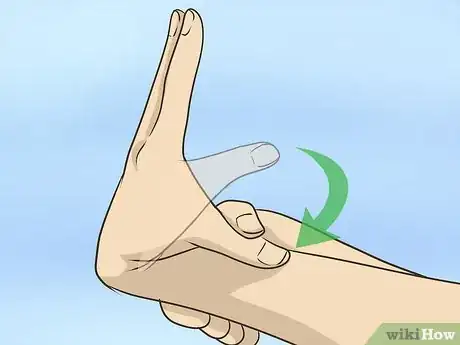
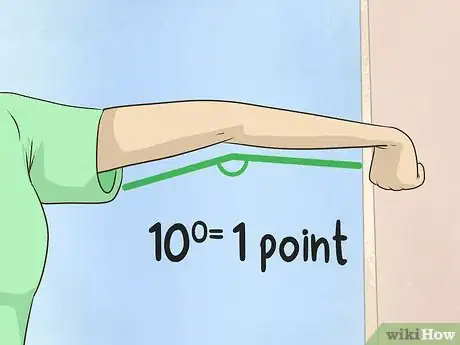
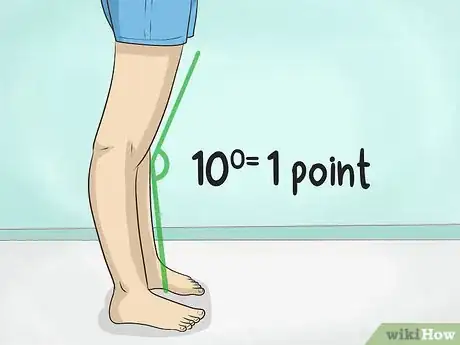
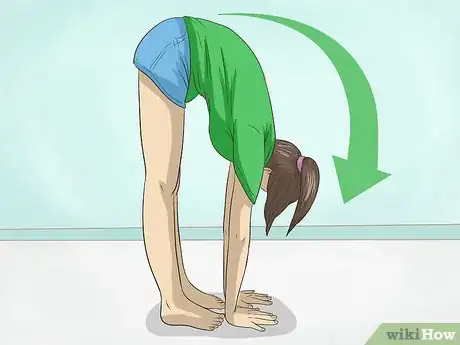

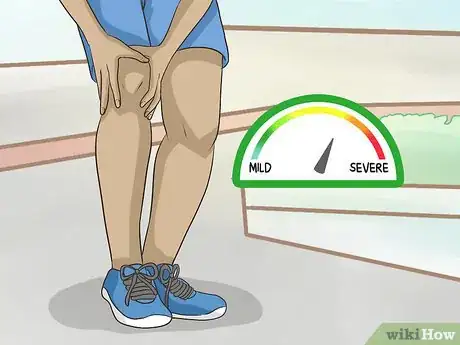


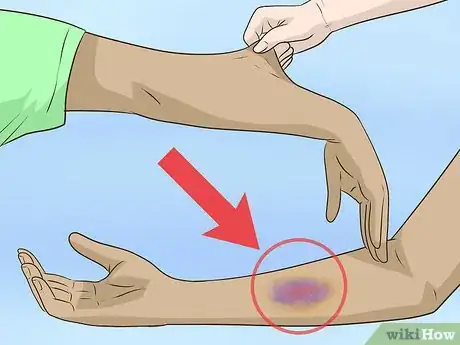
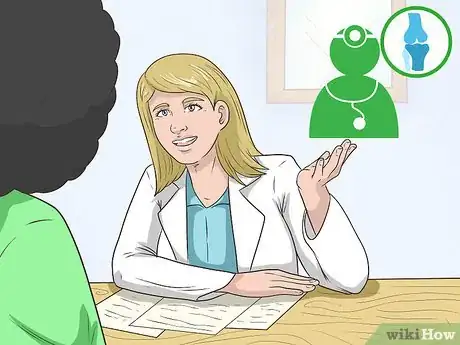

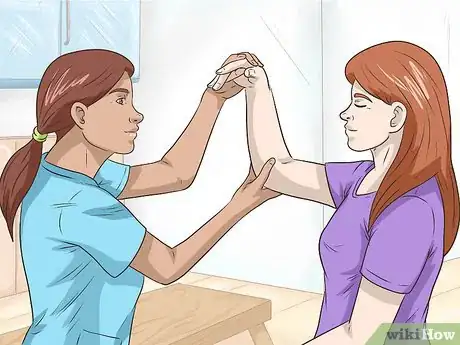
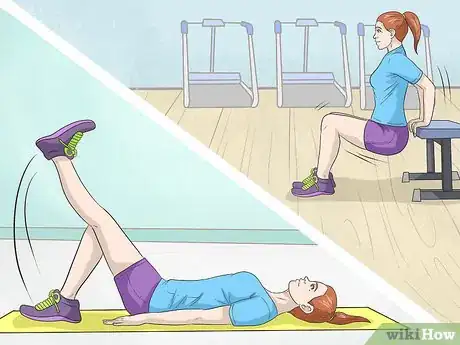
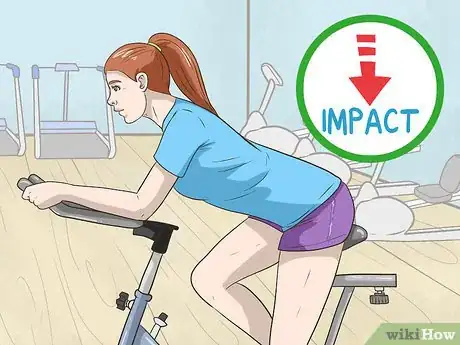

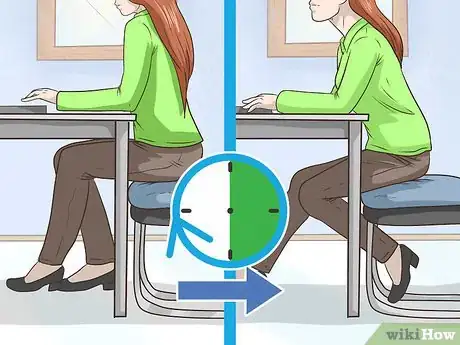

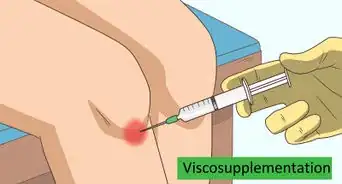
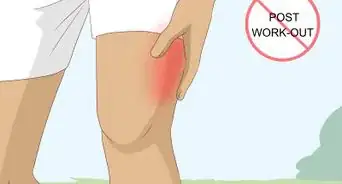

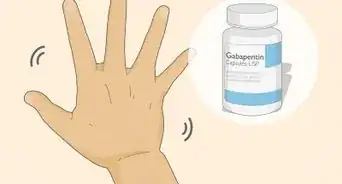


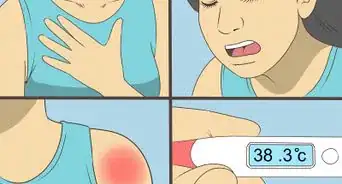



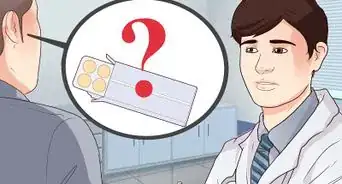
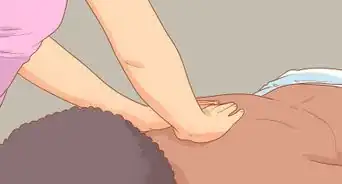










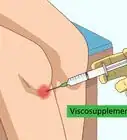
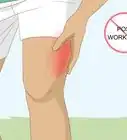
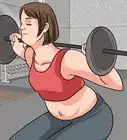



































Medical Disclaimer
The content of this article is not intended to be a substitute for professional medical advice, examination, diagnosis, or treatment. You should always contact your doctor or other qualified healthcare professional before starting, changing, or stopping any kind of health treatment.
Read More...